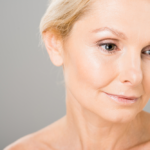Sunlight is so important to our health, but how do you enjoy your time outside without worrying about some of the risks that come along with it? At One Life Health and Performance in Palm Beach Gardens, FL, we’re here to give you some practical ways of managing wise sun exposure.
Managing Wise Sun Exposure
How to Get the Benefits While Minimizing the Risks
In modern life, we spend more time indoors than our ancestors did. Many of our jobs are inside, where we are protected from the sun and the elements. However, this doesn’t come without its downsides. Often times we can end up starved of the benefits of sunlight, and find our immune systems suffering due to it. That said, managing wise sun exposure can be tricky.
If we were to lay out in direct sunlight all day without any protection, we could be putting ourselves at risk for skin damage or worse. Many people believe that they only need skin protection during the summer. The sunlight our bodies receive during those hot summer days can be more concentrated, but the same UV rays that cause skin cancer during the summer are still present during the winter. So, how do you protect yourself?
How Much Sun Is Enough?
The human body is usually pretty good about producing Vitamin D, even with just a little bit of sun exposure. If you receive anywhere from five to 15 minutes of sun on the unprotected skin of your arms and legs about two or three times a week, that is generally considered enough to produce the Vitamin D your body needs.
After 10 or more minutes of being out in the sun, it’s a good idea to start protecting your skin. Sunburn is the most visually obvious sign of sun damage, but your skin can get sun damage even before you burn.
All Skin Tones Need Protection
It’s true that darker skin can be more effective at handling the sun’s damaging UV rays. Darker skin produces more melanin, which is what gives skin the ability to withstand sunlight. However, no one is immune to sun damage. While it may take slightly longer for sun damage to occur in those with darker skin tones, the keyword here is “slightly.” Managing your sun exposure is important regardless of skin tone.
There is a common mindset that people with darker skin won’t get skin cancer, but this isn’t true. This dangerous mindset can lead to a false sense of security, and increase the chance of sun damage and skin cancer in anyone who doesn’t practice skin protection. Even if your skin doesn’t burn easily, UV rays can increase your risk of skin cancer without any sign of sunburn.
Avoid Tanning Beds
There are several reasons someone may choose to use a tanning bed. Some people are self-conscious about how they look in a bathing suit and want to look beach-ready before they hit the beach. Others simply prefer how they look with a tan. Regardless of the reason, tanning beds are still a popular destination, despite the risks associated with them.
Tanning beds speed up melanin production, so you’ll get a quicker tan using a tanning bed than if you were to spend time outdoors. However, that can mean that there is more risk spending the same amount of time in a tanning bed than if you were spending time in sunlight. Sadly, tanning beds are not a safer way to attain a tan, even if it is quicker.
Have Concerns Looked Into Right Away
At One Life Health and Performance, our medical esthetician can look into any concerns you have about your skin. Some of the most common signs of skin cancer are:
- Moles or birthmarks that are asymmetrical
- Moles that change color, shape, or size
- Skin markings that have multiple shades of brown or pink
- A spot on the skin that is larger than 1/4 of an inch
- The border of a mole is irregular and blurred instead of round and regular
If you notice any concerning symptoms, it’s time to get it looked at right away. The earlier skin cancer is diagnosed, the easier it is to treat. When it comes to something as serious as the possibility of cancer, the “wait and see” method is very risky. If you visit and the suspicious marking isn’t cancer, you’ve given yourself peace of mind. If it is, a visit with a medical professional can get you the treatment you need.
Use Effective Sun Protection
Knowing the options you have when it comes to sun protection can help you make the right choice, or combination of choices, for your skin and your lifestyle. How much sun protection you need will partly rely on your location. If you either live in or are visiting a high altitude area, you are going to be exposed to a higher concentration of UV rays.
UV rays are present year-round. Although they may be more concentrated during certain times of the year, the temperature outside doesn’t always correlate with UV exposure risk. Knowing your area’s UV index can be a helpful tool. The UV index ranges from low, to very high. The higher your area’s UV index level, the more thorough you need to be about skin protection.
Sunscreen
When used right, sunscreen can reduce your risk of skin cancer and premature skin aging. The right “sun protection factor,” or SPF level, in your sunscreen depends on the UV index in your area. For everyday use, an SPF level of 30 should offer plenty of protection. Higher levels of SPF may be a good idea if you’re planning to enjoy more time outside than what’s usual for you.
Regardless of the SPF level, you should re-apply sunscreen every two hours that you are out in the sun. UV exposure will slowly break down the SPF in your sunscreen. So if you are spending the whole day outside, it’s a good idea to stick to the rule of re-applying every two hours. However, if you are spending most of your day inside, a single morning application of SPF 30 should cover you fairly well.
Sunblock
It’s common to hear people use the words sunscreen and sunblock interchangeably. Both are applied to the skin, but they work in different ways. Sunscreen works by absorbing into the skin and protecting the dermal layers of the skin from UV damage. The chemicals in sunscreen will absorb the UV rays before your skin has a chance to.
Sunblock works by sitting on top of the skin as a protective layer against the sun. Instead of absorbing UV rays, it blocks them. The active ingredient in sunblock is usually either zinc oxide or titanium dioxide. Sunblock can be a great alternative for sunscreen when someone’s skin is sensitive to the ingredients of sunscreen. Some sunscreens are a hybrid and contain sun-blocking ingredients for even more protection.
Look Into Both UVA and UVB Protection
UVA and UVB can both damage the skin, but some sun protection products don’t offer protection against both of these ray types. When you’re looking into sunscreen or sunblock, make sure the product mentions both UVA and UVB.
Shade
Shade is a great way to reduce sun exposure risk, but it’s not foolproof. While finding or setting up a shady reprieve, keep the angle of the sun in mind. You’ll want as much of the sun to be blocked as possible, so you may have to adjust your shade as the sun changes position throughout the day. A group of trees offers more protection than a single one, while a solid structure offers more protection than trees.
If you’re using a fabric barrier, such as a beach umbrella, check the ultraviolet protection factor (UPF) levels on the tag. A UPF of 30 or more is ideal. UV rays can reflect, so even while under shade you can be receiving some UV exposure from the area around you. Having a structure with sides will give you more protection against this secondary UV exposure.
Sun-Protective Clothing
Any coverage will offer protection against the sun, but clothes that are specifically designed to protect the wearer against UV rays will be especially helpful. The higher the UPF levels, the more protective the fabric will be.
What Are the Benefits of Sun Exposure?
Now that we’ve broken down some ways you can experience sun exposure safely, it’s time to take a look at some of the reasons you should get out and catch some rays.
Boost Your Vitamin D Supply
While it’s true that some foods such as “fatty fish”, liver, egg yolks, and cheese can be helpful in increasing Vitamin D levels, the most powerful source of Vitamin D is the sun. Vitamin D is vital to our health. It promotes healthy teeth and muscles by regulating our body’s calcium and phosphorus levels.
Having healthy levels of Vitamin D has also been linked to a stronger overall immune system, especially when it comes to effective immune system response. It supports our body’s macrophages and T-cells, which are key in fighting off pathogens.
It May Aid in the Fight Against Stress and Depression
While we do not promote the idea of a “quick fix” for anxiety and depression, sunlight can help encourage a feeling of wellbeing, which in turn can make tackling depression and anxiety a little bit easier. Sunlight has been linked to balancing out the levels of melatonin and serotonin in the body. Serotonin has many functions, but it is also sometimes known as the “happy chemical.”
Some Sunlight Might Help You Sleep Better
The melatonin levels in our body have an effect on our circadian rhythm. The circadian rhythm is how our body knows when it’s supposed to be awake or asleep. Our bodies expect us to be out during the day and inside sleeping at night. Catching some sun can help “remind” the body to produce melatonin at night, which in turn can help us get a good night’s sleep.
How About the Risks?
So we know some ways of managing wise sun exposure, and we’ve covered some of the benefits sunlight has to offer. What then are the risks of too much unprotected time in the sun?
Skin Damage
Too much UVA and UVB exposure both cause different kinds of skin damage. UVA has been tied to wrinkles and signs of early aging. It reaches through the dermis layer of the skin, and can actually penetrate through glass. UVA levels are fairly consistent throughout daylight hours.
UVB is the culprit behind sunburn. It tends to be at its strongest levels between 10 am and 4 pm in the spring and summer. Unprotected exposure to both kinds of UV rays can lead to genetic defects that make us more susceptible to skin cancer.
Skin Cancer
Skin cancer is, by far, one of the biggest motivators for sun protection. If you have a history of skin cancer in your family, taking extra precautions is especially important for you.
There are four main types of skin cancer:
- Basal cell carcinoma, the most common type of skin cancer
- Melanoma, the most serious kind of skin cancer
- Squamous cell carcinoma, often found on lips
- Merkel cell cancer, fast-growing and rare
Eye Damage
The skin isn’t the only part of your body that needs your help in managing wise sun exposure. You may find yourself wearing sunglasses during bright days, just to help you see a little easier. However, there’s an even better reason to invest in some shades. Prolonged sun exposure has been linked to degenerative eye conditions such as cataracts.
Meet With a Team That Knows How to Help
If you have any concerns about your skin health, reach out to our friendly team at One Life Health and Performance today! We proudly serve the Palm Beach Gardens, FL area, and are ready to help arm you to better protect your health and your skin.





